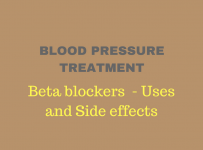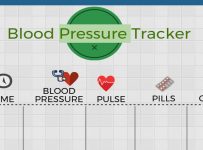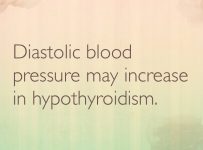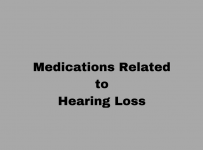Benzodiazepines are prescribed to treat panic attacks and anxiety. Panic attacks are characterized by the intense sensation of fear caused by anything that could be considered as a threat. They tend to occur suddenly, peak at 10 minutes and could last from 30 minutes to 1 hour but they could occur in succession over several days. They frequently resemble heart disease and every symptom creates a feedback loop that intensifies itself and gives rise to the next one.
Common panic attack symptoms
- Palpitations
- Sweating
- Hand tremor
- Difficulty in breathing
- Chest pain usually well localized
- Nausea and vomiting
- Abdominal discomfort
- Fear of losing control
- Feelings of unreality
- Dizziness
- Hot flushes
Generalized anxiety is characterized by “excessive, uncontrollable and often irrational worry, that is, apprehensive expectation about events or activities”. It affects every part of a person’s life and is a continuous sensation that something will go wrong with everything: family issues, financial, health, personal life.
Symptoms are similar to panic disorder but are less intense and have a longer duration.
Common anxiety symptoms
- Muscle tension
- Interrupted sleep
- Easy fatigue
- Irritability
- Increased heart rate
Medications for anxiety and panic disorder
The most commonly prescribed drugs used in the treatment of anxiety, fall into 3 categories: Antidepressants, anxiolytics and beta blockers. The first two types of medications aim to restore the balance between chemical substances released in the brain during processing of information. Beta-blockers target certain physical symptoms (i.e increased heart rate) which could occur as a result of a panic attack or anxiety. Certain antihistamines are also used for their sedating properties.
Do not Mess with Benzos
Since 1960 when first appeared, benzodiazepines have been used by hundreds of thousands of people. Only a small number of existing benzodiazepines have been approved by FDA with Valium and Xanax being the most commonly prescribed medications in the US.
It is important for everyone using these drugs to be aware of their side effects and the risk of addiction.
Beware of Tolerance
Tolerance is another side effect of prolonged use and means that lower doses are not enough and higher doses are needed to produce the minimum sedative effect.
Benzodiazepines are designed to directly act on the central nervous system to produce sedation, muscle relaxation and the decrease in brain activity.
Benzodiazepines Cause Dementia
Besides, there have been many studies that prove the negative relationship between benzodiazepines and dementia. A recent meta-analysis of all relevant studies concluded that either long-term use of benzodiazepines or long-acting benzodiazepines is both associated with an increased risk of dementia.
Benzodiazepines Cause Addiction
Benzodiazepines and other sedatives do their work by slowing down brain activity. Sudden cessation leads to a rebound effect that could cause seizures.
Do not Combine Benzodiazepines with Alcohol or other Similar Medications
Combining benzodiazepines with opiate drugs, alcohol or other medications from the same category, could lead to severe respiratory depression.
Morphine, fentanyl, oxycodone, hydrocodone and acetaminophen should not be taken along with benzodiazepines.
The “date-rape” drugs
Benzodiazepines can considerably impair the ability of a person to resist sexual aggression or assault because they lead to weakness and confusion. Drug-facilitated rape is difficult to know how exactly it did happen and if the drug abuse was voluntary or not. The fact is that it does happen and becomes more and more common.
Below are listed two of the most common drugs used before a sexual assault and what their effects are
when consumed together with alcohol:

Flunitrazepam (Rohypnol) is up to 10 times stronger than Valium and causes fast sedation and relaxation. It is prescribed for sleep disorders and is used in anesthesia. Rophinol can be detected in body fluids for up to 72 hours.
Ketamin is a fast-acting anesthetic, manufactured in Europe. It can be either in liquid or powder form. It acts by blocking specific brain receptors, which are involved in learning, memory and coordination. High doses of ketamine can produce hallucinations.
Did you know? Decongestants can Increase Blood Pressure














